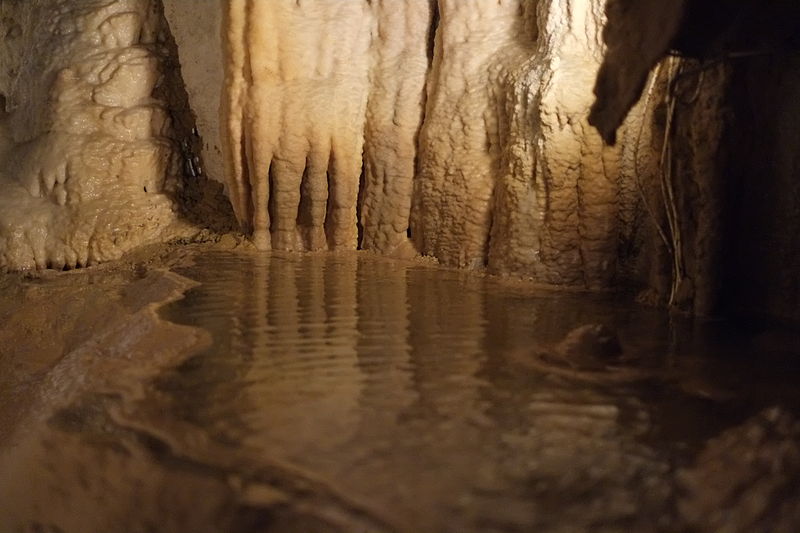Alabama Cave Shrimp - BIO203
Cave Critters Can Do What?
The Alabama Cave Shrimp has a
recovery priority number of five, meaning they face a high
degree of threat but a low potential of recovery (Bibb et al.
2006). In order for the Alabama Cave Shrimp to be downlisted
from the endangered species list, five viable populations in
five separate habitats need to be recognized, protected, and
documented (Bibb et al. 2006).
 Right now only two of these
populations exist, one in Bobcat Cave and the other in the cave
complex consisting of Hering, Glover, and Brazelon Caves (Bibb
et al. 2006). For more information on the caves this organism is
found in, please visit our
Habitat page. A possible new population of Alabama Cave
Shrimp may have been discovered in Muddy Cave, also in Madison
County, Alabama, along with the other already confirmed
populations of these organisms (Bibb et al. 2006). This
population is still unconfirmed, but is likely another species
of Alabama Cave Shrimp, because its morphology is different from
them but genetic similarities are very strong (Bibb et al.
2006).
Right now only two of these
populations exist, one in Bobcat Cave and the other in the cave
complex consisting of Hering, Glover, and Brazelon Caves (Bibb
et al. 2006). For more information on the caves this organism is
found in, please visit our
Habitat page. A possible new population of Alabama Cave
Shrimp may have been discovered in Muddy Cave, also in Madison
County, Alabama, along with the other already confirmed
populations of these organisms (Bibb et al. 2006). This
population is still unconfirmed, but is likely another species
of Alabama Cave Shrimp, because its morphology is different from
them but genetic similarities are very strong (Bibb et al.
2006).
The first Alabama Cave Shrimp was discovered in
1958 (Jacobson and Hartfield 1997). Even though they have been a
known organism for so long, it has not yet been documented how
long the Alabama Cave Shrimp lives (Jacobson and Hartfield
1997). This is largely due to the difficulties in entering the
caves to study these organisms. Even within the Alabama Cave
Shrimp species, there are many differences in appearance
(details found in
Form and Function) from cave to cave (Cooper and Cooper
2010).
 In
addition, Alabama Cave Shrimp sometimes feed upside-down at the
water surface, so even when the caves are accessible, the
differences in morphology and the fact that they are hidden
under the surface of the water makes these organisms very tricky
to study (Cooper and Cooper 2010). The Alabama Cave Shrimp have
a unique behavioral pattern that involves them moving towards
deeper ground when water levels in the cave recede (McGregor et
al. 2005). This is thought to be so the organisms do not get
carried off with the water and stranded in individual pools
(McGregor et al. 2005). This also contributes to the lack of
Alabama Cave Shrimp visible to researchers trying to study them.
In
addition, Alabama Cave Shrimp sometimes feed upside-down at the
water surface, so even when the caves are accessible, the
differences in morphology and the fact that they are hidden
under the surface of the water makes these organisms very tricky
to study (Cooper and Cooper 2010). The Alabama Cave Shrimp have
a unique behavioral pattern that involves them moving towards
deeper ground when water levels in the cave recede (McGregor et
al. 2005). This is thought to be so the organisms do not get
carried off with the water and stranded in individual pools
(McGregor et al. 2005). This also contributes to the lack of
Alabama Cave Shrimp visible to researchers trying to study them.
If you would like to see where we got all of this wonderful information and more, please visit our References page.